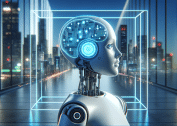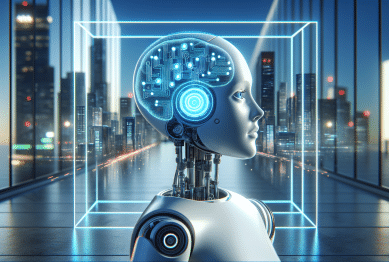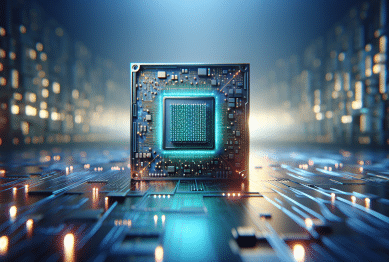Artificial intelligence quietly powers more of your everyday experiences than you might expect. This guide uncovers how machine learning, automation, and smart devices shape decisions, enhance convenience, and influence privacy—inviting a closer look at the real effects of today’s most talked about technology.
AI Behind the Scenes in Everyday Interactions
Artificial intelligence (AI) subtly operates beneath the surface of countless daily tasks. Whether streaming a favorite show, confirming a bank transfer, or navigating with a smart assistant, machine learning seamlessly analyzes patterns and personalizes each user’s experience. As algorithms grow more advanced, routine online activities—like searching, shopping, or communicating—are becoming increasingly tailored. While these improvements offer distinct efficiency and comfort, the degree of customization often goes unnoticed, blurring the lines between convenience and oversight in modern routines.
Personalized recommendations, which many encounter daily on platforms such as video streaming or e-commerce, hinge on sophisticated data analysis. AI sifts through viewing history, purchasing habits, and search terms to predict preferences, suggesting content or products that align with a user’s tastes. This underlying technology not only drives user engagement but also elevates the business value for providers—demonstrating how AI directly influences both consumer experience and market strategies in a subtle, continuous cycle. These adaptations may appear minor, but their cumulative effect is transformative.
The impact of artificial intelligence stretches beyond digital services. In banking, for example, smart fraud detection systems monitor transactions for unusual behavior, helping reduce risks while keeping users informed. Virtual customer support agents resolve routine inquiries in real time, liberating human staff for complex issues. As these systems grow smarter, they balance responsiveness with security—quietly shaping interactions while consumers often remain unaware of the intricate AI processes working on their behalf.
Smart Devices and the Household Revolution
Smart home technology has rapidly intertwined with daily routines, streamlining everything from climate control to food preparation. The proliferation of connected devices, enabled by AI and automation, is changing the fundamental character of modern households. For instance, intelligent thermostats learn habits and adjust settings to balance comfort with energy efficiency. Even kitchen appliances, such as smart refrigerators, use embedded sensors and data analytics to manage inventory, suggest recipes, and minimize waste. Such features demonstrate how AI is pushing convenience to new heights while raising interesting questions about efficiency and reliance.
Voice assistants have found their way into millions of homes, acting as mediators between users and a growing ecosystem of smart devices. Commands to turn on lights, schedule reminders, or play music are executed smoothly, relying on robust natural language processing algorithms. As these assistants mature, they become more attuned to individual user speech patterns and preferences, sometimes even anticipating needs before they are articulated. The underlying data exchange enhances responsiveness but brings privacy and data security topics to the forefront, especially as devices continuously listen for wake words or commands.
The integration of AI systems goes beyond convenience; it fosters a new relationship between households and technology. Emergency alerts, home security adjustments, and predictive maintenance notifications are all managed by AI algorithms. This proactive sensing extends peace of mind but also invites consideration of what households trade in return—data points that form increasingly detailed lifestyle profiles. As reliance on smart devices deepens, ongoing education about privacy controls becomes an essential part of responsible usage in the age of interconnected living.
Automation and the Changing Face of Work
AI-powered automation is redefining traditional workplace roles, reshaping both how work gets done and the skills required to thrive. Robotics, data analysis, and process automation help businesses streamline repetitive tasks, enabling workers to focus on creative and strategic functions. In sectors like manufacturing, logistics, and customer service, automated systems handle routine processes—minimizing errors, accelerating output, and driving efficiency. Such shifts highlight the growing significance of technological literacy in employee skill sets and workplace training programs.
In knowledge industries, automation tools assist with everything from sorting emails to generating reports or analyzing large datasets. Collaborative AI platforms facilitate teamwork across borders, automating translation, summarizing key points, or flagging urgent issues for human attention. These adaptive tools empower employees to work faster and smarter, helping organizations keep pace with the data-driven economy. However, the shift raises questions about long-term employment opportunities, especially as roles evolve or disappear due to machine-driven optimization.
Despite concerns regarding job displacement, forward-looking organizations are investing in upskilling and reskilling programs, preparing workers for collaboration with intelligent systems. Some employees transition from manual labor to supervisory positions overseeing automated workflows. A growing focus on ethical AI implementation seeks a balance between operational efficiency and the well-being of human staff. This transition signals more than just technological advancement; it illustrates broader cultural shifts in what modern work looks like and the values that define success in the workplace.
Impact of Machine Learning on Healthcare and Wellness
AI-driven tools are increasingly used to assist in healthcare—enhancing diagnostics, forecasting disease trends, and personalizing patient care. Machine learning models sift through mountains of medical data, flagging anomalies a human might miss. Early detection for illnesses such as cancer or cardiovascular disease benefits from image-recognition AI, contributing to more accurate diagnoses and potentially improving patient outcomes. Health professionals now leverage predictive analytics to identify at-risk populations and deploy preventive interventions more efficiently than before.
Wearable fitness and health monitoring devices illustrate the convergence of AI with personal well-being. Sensors track steps, heart rates, sleep patterns, and even subtle physiological metrics, sending real-time alerts when abnormalities arise. These insights empower individuals to manage their health more proactively but also introduce concerns about data sensitivity and the implications of widespread health tracking. Secure design and transparent data policies emerge as crucial components in sustaining trust and encouraging responsible adoption of health technologies.
Smart hospitals and telemedicine platforms harness AI to facilitate remote consultations, triage, and patient monitoring, expanding the reach of healthcare to underserved populations. Chatbots answer basic medical questions, schedule appointments, and guide patients through post-discharge care. The efficiency gains are notable, yet experts recognize the importance of retaining a human touch in complex or sensitive cases. By blending automation with personalized interaction, healthcare providers seek a balance that serves both organizational goals and patient welfare.
Privacy, Ethics, and Navigating the Data Landscape
As AI systems rely on vast datasets, privacy emerges as a central issue. Personal information—ranging from location data to individual preferences—feeds algorithms designed to refine recommendations and deliver tailored experiences. Regulatory frameworks such as the General Data Protection Regulation (GDPR) set guidelines for responsible collection, storage, and use of consumer data. These efforts encourage businesses and users alike to approach data transparency and consent with renewed seriousness, ensuring that privacy rights are protected in the face of expanding technological capabilities.
Ethical considerations play a role in shaping how AI impacts society. Bias in data or algorithms can perpetuate inequalities if not addressed, especially when making high-stakes decisions in areas like hiring, lending, or criminal justice. Some organizations implement transparent reporting and independent oversight to evaluate algorithm performance and impact. By taking these steps, thought leaders emphasize accountability, fairness, and accessibility in the evolution of AI—acknowledging that technology should support positive social outcomes, not just productivity.
Navigating the balance between advantage and accountability requires ongoing awareness from users and businesses alike. Opting in or out of certain data practices, using robust privacy features, and advocating for ethical guidelines empower individuals to make informed choices. As AI systems become more deeply embedded in daily routines, proactive education—about both risks and rewards—strengthens society’s resilience against potential misuse. The partnership between regulation, industry leadership, and public understanding underpins the responsible development of artificial intelligence in the digital era.
The Future of Artificial Intelligence in Society
Artificial intelligence will likely become further integrated into lives across industries, as ongoing research continues to break new ground. From transportation to weather forecasting and personalized learning platforms, the role of AI is set to expand, offering promise along with new challenges in governance and design. Stakeholders in government, industry, and academia collaborate to assess potential and mitigate risks, shaping the direction of future implementations. The adaptive nature of AI ensures possibilities remain open, as technology continually learns and evolves.
Interdisciplinary collaboration is key to realizing the benefits of AI while protecting against unintended harms. Policymakers seek input from computer scientists, ethicists, and the public to establish standards rooted in transparency and equity. Innovation hubs and research institutions drive experimentation, testing how advanced algorithms might support urban planning, emergency response, or environmental conservation. By involving diverse perspectives, future systems can better address the complexity and nuance of real-world needs—making artificial intelligence more inclusive and broadly beneficial.
Public engagement is a vital part of the AI journey. By participating in discussions, staying informed, and advocating for ethical use, individuals help shape the kinds of services and policies that emerge. Digital literacy education—ranging from basic concepts to advanced AI literacy—becomes increasingly important as more people interact with intelligent systems. This combination of active citizenship and collaborative innovation positions society to both harness the value of artificial intelligence and navigate its uncertainties with confidence.
References
1. National Institute of Standards and Technology. (n.d.). Artificial Intelligence. Retrieved from https://www.nist.gov/artificial-intelligence
2. World Health Organization. (n.d.). Ethics and governance of artificial intelligence for health. Retrieved from https://www.who.int/publications/i/item/9789240029200
3. European Union. (n.d.). General Data Protection Regulation (GDPR). Retrieved from https://gdpr.eu/
4. MIT Technology Review. (n.d.). How Artificial Intelligence is Changing Science. Retrieved from https://www.technologyreview.com/2022/05/12/1051939/artificial-intelligence-science/
5. U.S. Food & Drug Administration. (n.d.). Artificial Intelligence and Machine Learning in Software as a Medical Device. Retrieved from https://www.fda.gov/medical-devices/software-medical-device-samd/artificial-intelligence-and-machine-learning-software-medical-device
6. Carnegie Mellon University. (n.d.). Responsible AI. Retrieved from https://www.cmu.edu/policy/ai.html









